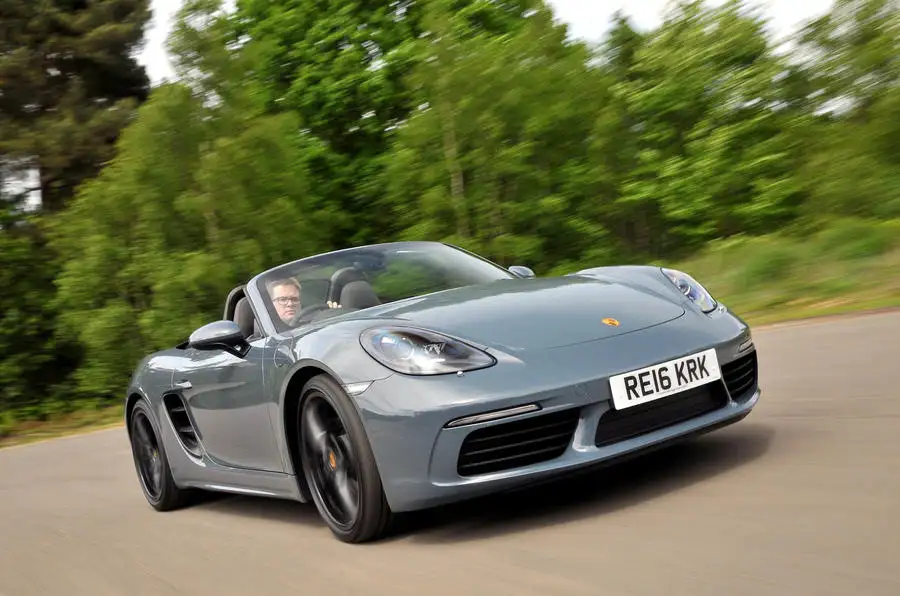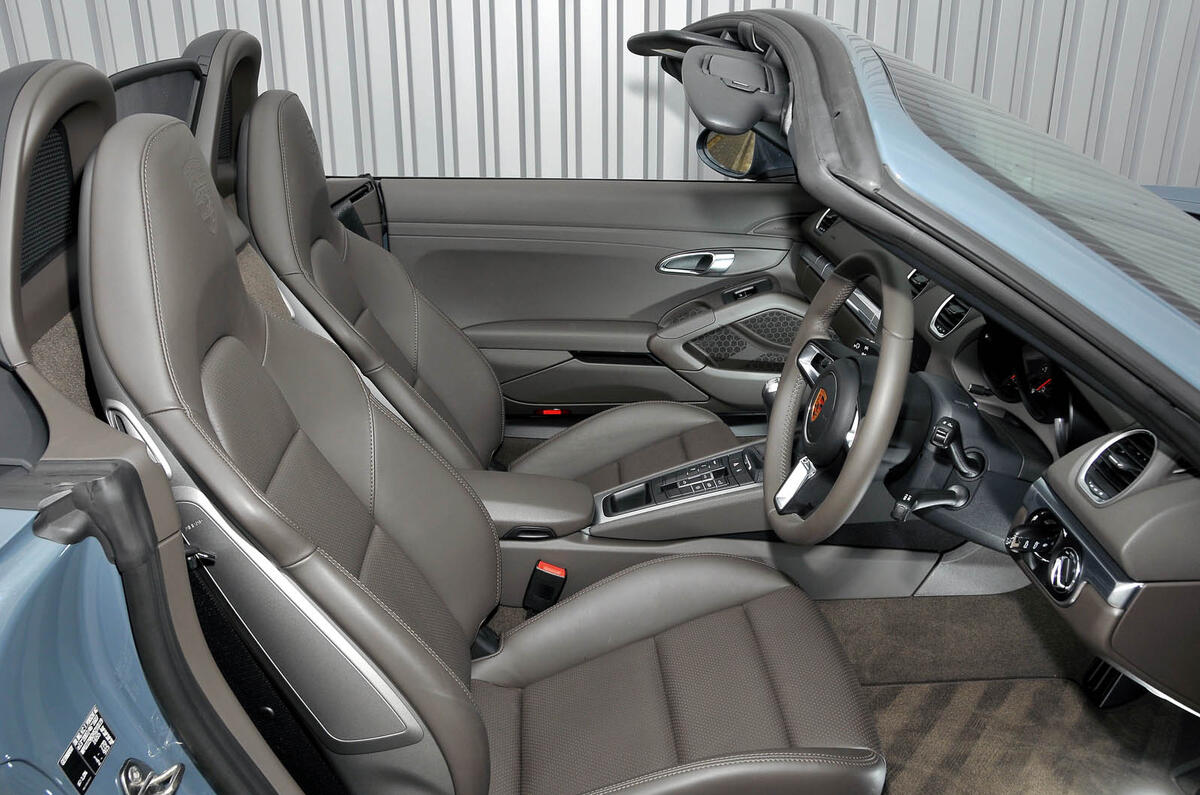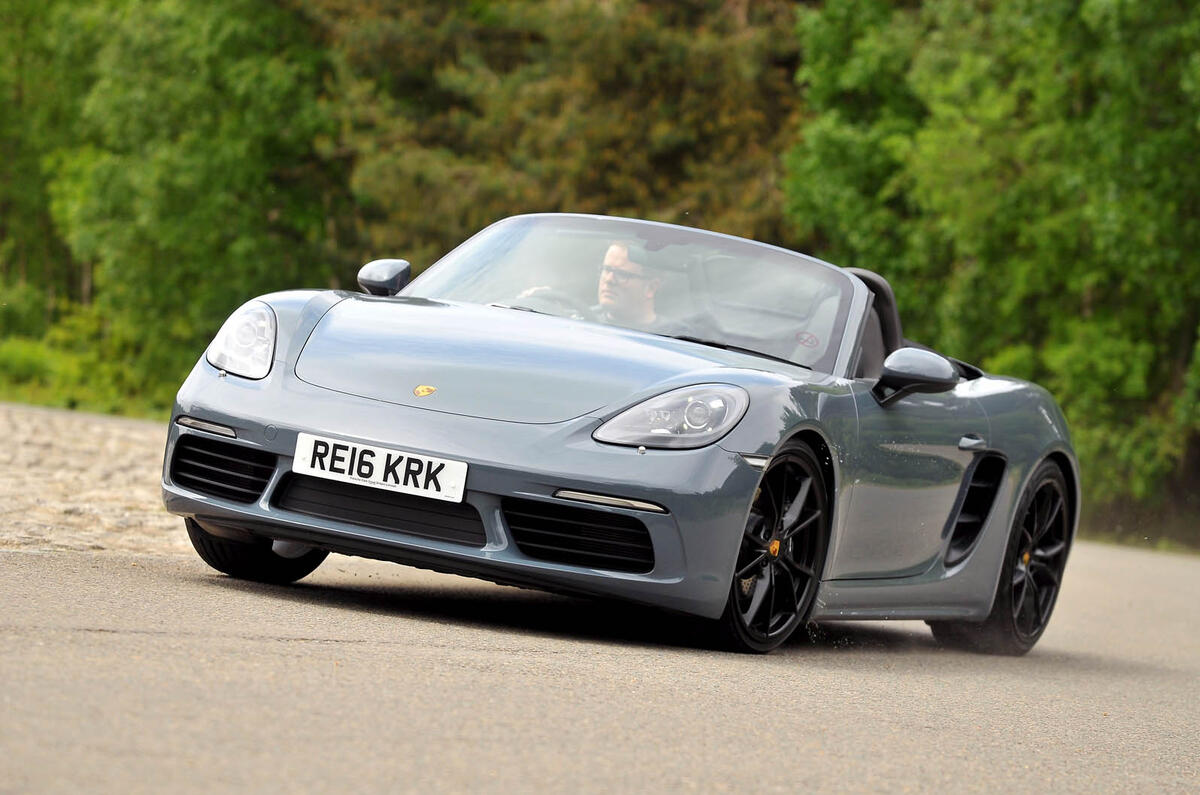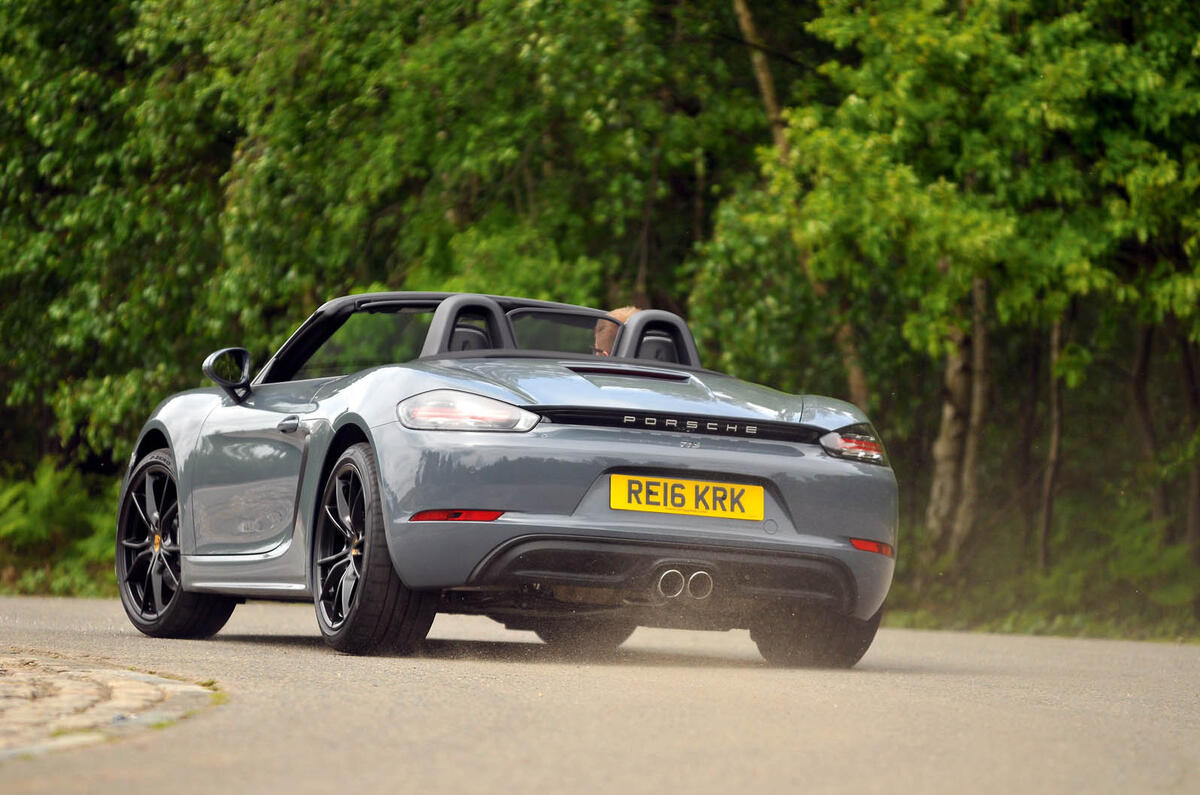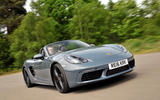Although top-of-the-line 718s will use six-cylinder engines like their direct forebears, the biggest-selling Boxster, Boxster S, Cayman and Cayman S are now powered by horizontally opposed four-cylinder engines – just like the racing Porsches of the 1960s of the same numerical identity.
The lower-rung Boxster’s engine is a 2.0-litre unit of 296bhp and 280lb ft and the higher-end Boxster S has 2.5 litres with 345bhp and 310lb ft. Both engines have the same 76.4mm cylinder stroke and significantly oversquare cylinders.
Both are also turbocharged. And although turbos fitted to 911s come in pairs, the 718s fly solo.
The Boxster S’s turbo has variable-geometry turbine technology to help with low-end response, but the 2.0-litre Boxster’s doesn’t.
Both motors can ‘pre-condition’ their turbos when part-loaded by retarding ignition timing slightly and increasing throttle position to compensate.
Relative to the Boxster it succeeds, the 718’s dimensions are little altered. It’s within 5mm of the outgoing car on length and 2mm on height and it has the same width and wheelbase.
The mix of aluminium and steel in the body-in-white is mostly as it was, although outwardly the only body parts to be carried over from the old car are the luggage compartment covers and cloth roof.


